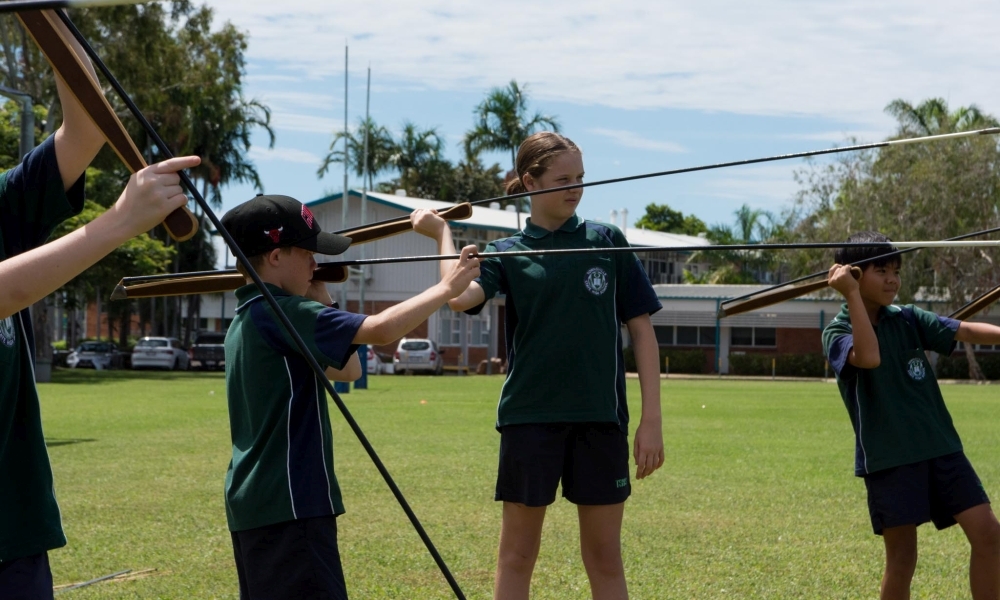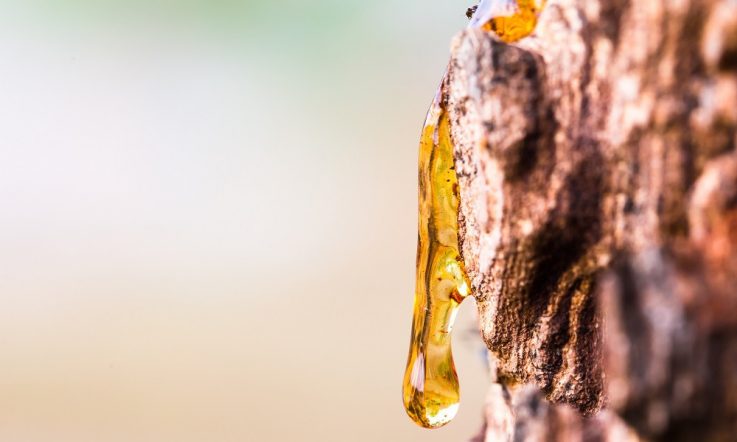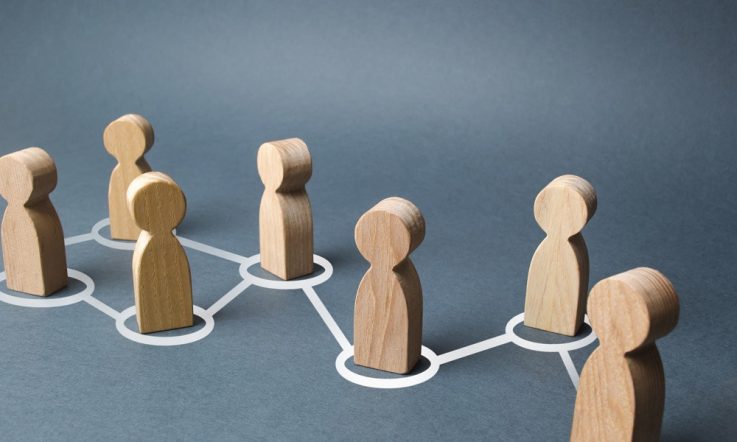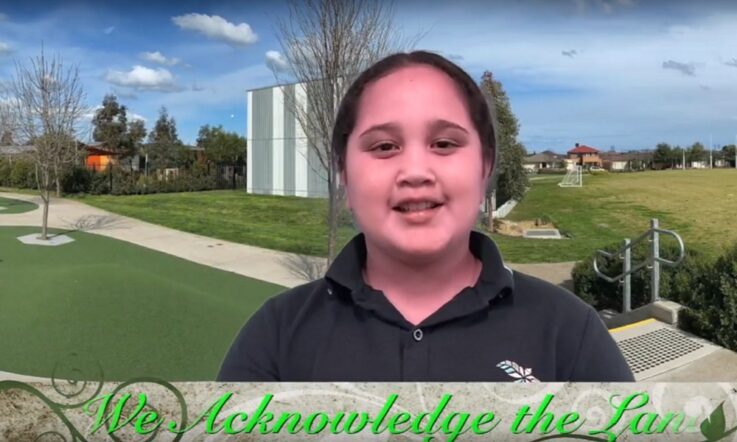Embedding Indigenous perspectives into the curriculum has seen these Queensland students conduct a hands-on inquiry into the science of the woomera – an Australian Aboriginal spear-throwing device.
The Year 7 students at Townsville State High School have been working with cultural expert Les Tanna to investigate how the construction of the spear-thrower effects its function. It’s the culmination of a physics inquiry unit on levers.
It was developed after the school took part in the CSIRO’s I2S2 education program. The initiative is focused on embedding Aboriginal and/or Torres Strait Islander perspectives into the Australian Curriculum and increasing student engagement and achievement in science.
The unit was written by the CSIRO, then Year 12 Coordinator and science teacher Braden Askin and Head of Science Sarah Chapman refined and implemented it for their own school context.
‘They go through how to link the Indigenous culture and perspectives to the Australian Curriculum, how we might go about the inquiry, so, the practical side of it, how to gradually release responsibility to students,’ Askin tells Teacher.
‘They give you a lot of resources and information. It really gives the groundwork to build up from so we can shape and develop it into something that fits our context, fits our school, fits the year level, fits our students, and is something that will engage them.’
In 2020, 19 per cent of students at Townsville State High School were Indigenous and a further 27 per cent had a language background other than English.
‘Our school did the CSIRO training about two years ago and we actually started the unit we’re doing now with the Year 7s last year, and then COVID happened about a week later,’ Askin recalls. ‘So, this is the first year we’ve been able to flesh it out and really build it into a four or five week unit that really focuses on student work and strong cultural links.’
To develop those strong links, bringing in community expertise was a crucial part of the project’s success. Askin sought advice from the school’s Community Education Counsellor (a role in the Queensland system providing support for Aboriginal and Torres Strait Islander students) and the Clontarf Academy on site.
‘From there, I got in touch with Les. He’s done this with some other schools as well, so he came in and did the whole demonstration and taught the kids, and just gave that strong context and content knowledge, the historical knowledge that none of our teachers have firsthand.’
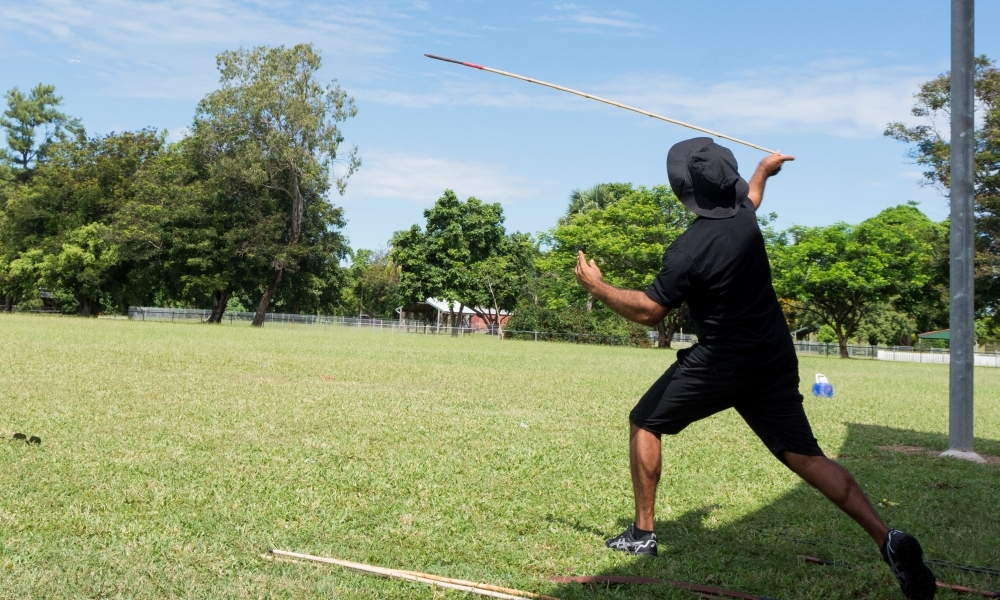
[Les Tanna demonstrating spear throwing at Townsville State High School. Image: Supplied]
Tanna was born in Cairns, grew up in Kuranda, and now lives in Townsville working for a local cultural mentoring program aimed at high-risk youth. ‘I’m a descendant of the kuku, yalanji, takalaka, yindinji, djabuganji, muluridji, djirrabal and Kokomini people,’ he tells Teacher.
‘I’ve been doing stuff with schools for over 10 years – whether volunteering my time or going into actual teacher workshops – just teaching culture, basic culture, to students that’s practical and fun, but also something they learn from. I think it’s awesome. You see the kids and they absolutely love it. I love this. Part of teaching my culture is passing it on to young people.’
The Year 7 unit of work links to physics, and specifically levers. Students started by throwing tennis balls in class with their arms, then progressed to using a ball thrower that you’d use to play fetch with your dog as a lever. They tested different variables, including holding the ball thrower in different positions to see if that affects how far the ball travels, and using different mass, different weighted balls, to see if a heavier object travels further. The ball thrower lever was likened to using a woomera and a spear.
‘From these investigations, they can really say “the best way to throw a tennis ball with a dog ball thrower is this, which would mean for a woomera, for a spear-thrower, they should be designed like this”,’ Askin explains.
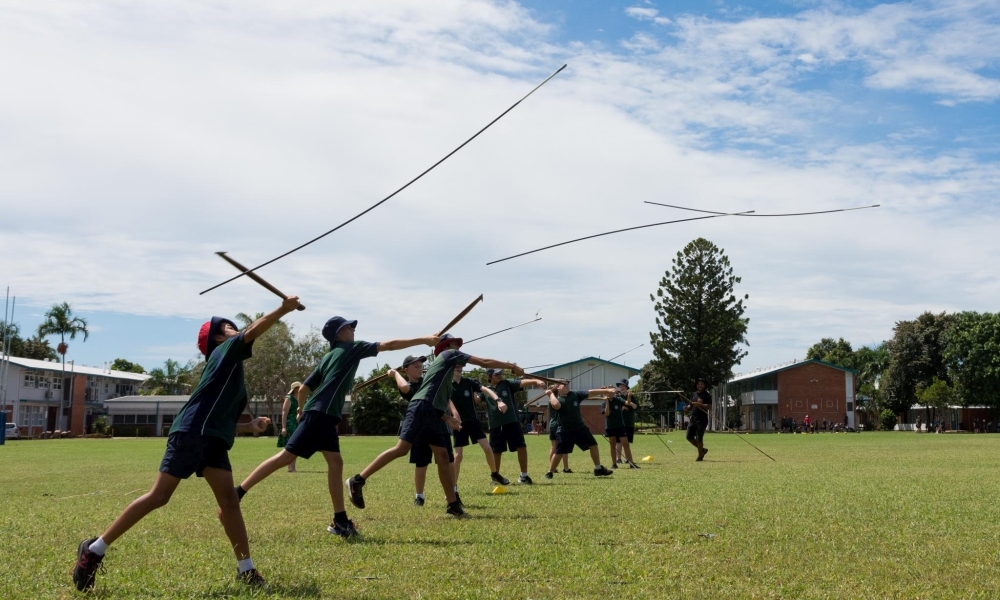
[The students investigated the design of dog ball throwers as a successful lever and were able to link their learning to the design of woomeras, testing out the spear-throwers on the oval. Image: Supplied]
‘When Les came they could actually make those real investigations. He brought in some fibreglass spears and some woomeras so the students actually got to compare then how similar what we were doing in class is to the real thing, and throw a spear using a spear-thrower. They were asking Les these questions as well – what’s the best length, what’s the best mass, how did they design it to make sure it goes this way – and they could then make those clear links. They plan the experiments, conduct them, get the results, graph the results, and analyse the results to make a conclusion.’
Askin and Chapman are also training teachers in other year levels to structure the inquiry model and embed Indigenous perspectives. Year 8 students will do two investigations: a geology unit looking at how different rocks are used for different tools, and a physics unit on energy transfer, looking at the different timbers used in generating friction and heat to start fires. ‘In Year 9 they look at burning ground – how that leads to germination and cultivation of agriculture, how certain plants will actually grow better once the ground has been burnt. And we investigate whether that’s due to the fire or the heat, or the smoke …,’ Askin says.
Asked whether this approach means a bigger workload, he says it’s no more than a teacher would plan for a normal assessment piece or unit of work. ‘In the Australian Curriculum we have to assess the inquiry process, so it’s going to happen anyway. For us, we put that in our physics unit. We used to look at objects and how they fall, so all we really had to do was change our investigation to this new one, looking at the physics of throwing an object.’
‘If anything, once we reached out to Les he sort of said what he could offer and we had a chat with him, it made planning easier because we knew what to focus on and how to fit that in with what Les was going to do with our kids out on the oval.’
‘It helps to engage Indigenous students, absolutely, and it gives the other students an appreciation of the cultural heritage of Australia. They’re still hitting the curriculum, but they’re doing it in a way they’ll engage with. And I guarantee the student would rather throw a spear out on the oval than roll a tennis ball down a ramp, any day of the week!’
Most times Tanna visits schools he gets lots of questions from teachers about what and how to teach – the dos and don’ts. He says educators can feel unsure, but it’s always best to get in touch with someone in the community to seek advice, and there are lots of added benefits to making these connections.
‘You’re reaching out into the community, your community base – you’re bringing in outside people to strengthen your school community. And, we want to bring our people together to learn off each other so that we can move forward – I think that’s the biggest thing, is learning from our past and history, and also our culture. Because, at the end of the day, this is the culture of Australia and I think it’s valuable that everybody, not just Indigenous people, learn this culture; everybody learns it so that we can move forward.’
Les Tanna says there are many benefits to reaching out into your community bases. How often do seek the advice of cultural experts? How could you work with members of the community to embed Indigenous perspectives into your school curriculum?
